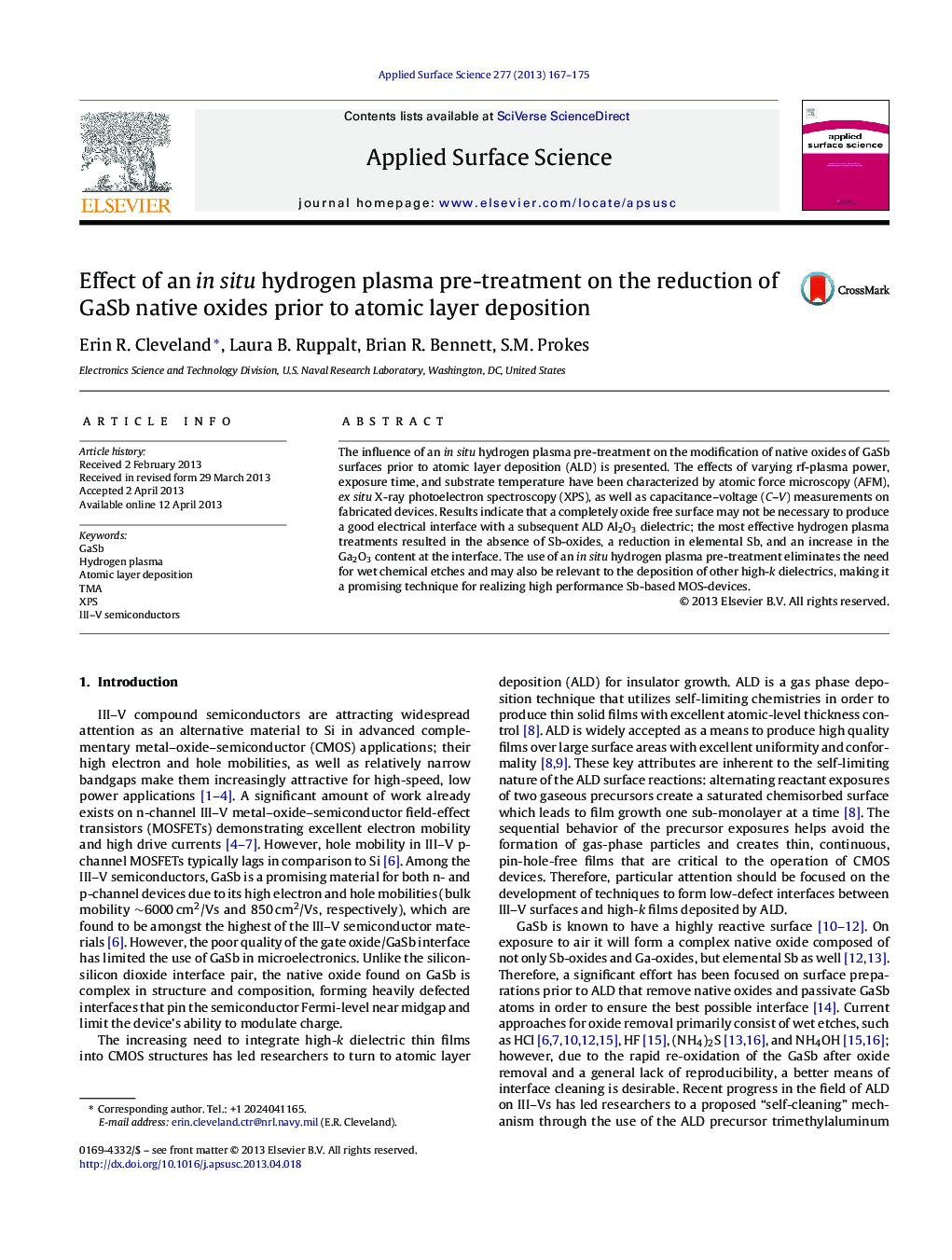| کد مقاله | کد نشریه | سال انتشار | مقاله انگلیسی | نسخه تمام متن |
|---|---|---|---|---|
| 5362614 | 1503686 | 2013 | 9 صفحه PDF | دانلود رایگان |

- H2 plasma exposure removes Sb-oxides, reduces elemental Sb, and increases Ga2O3.
- Oxide removal and redistribution highly dependent upon surface temperature.
- Surface modification tuned by plasma power, exposure time, and substrate temperature.
- Highest capacitance modulation correlated with highest Ga2O3 content.
The influence of an in situ hydrogen plasma pre-treatment on the modification of native oxides of GaSb surfaces prior to atomic layer deposition (ALD) is presented. The effects of varying rf-plasma power, exposure time, and substrate temperature have been characterized by atomic force microscopy (AFM), ex situ X-ray photoelectron spectroscopy (XPS), as well as capacitance-voltage (C-V) measurements on fabricated devices. Results indicate that a completely oxide free surface may not be necessary to produce a good electrical interface with a subsequent ALD Al2O3 dielectric; the most effective hydrogen plasma treatments resulted in the absence of Sb-oxides, a reduction in elemental Sb, and an increase in the Ga2O3 content at the interface. The use of an in situ hydrogen plasma pre-treatment eliminates the need for wet chemical etches and may also be relevant to the deposition of other high-k dielectrics, making it a promising technique for realizing high performance Sb-based MOS-devices.
Journal: Applied Surface Science - Volume 277, 15 July 2013, Pages 167-175